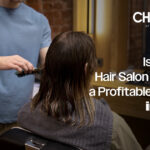Introduction
The connection between physical activity and hair growth is evidence of how intertwined our health is. Exercise for hairgrowth is not just good for your body; it also helps you have healthy hair. Stress reduction stops hair loss, while improved blood circulation nourishes hair follicles. This mutually beneficial association between exercise and healthy hair emphasises the whole-body interdependence that exists between our bodies and our hair.
In order to cultivate a healthy mane, it becomes imperative to acknowledge the significance of general well-being. Here, we investigate the relationship between consistent exercise, a healthy lifestyle, and the radiant development of our greatest asset.
Blood Circulation and Follicle Health – exercise for hairgrowth

Improved blood circulation throughout the body, including the scalp, is accelerated by regular exercise. The hair follicles receive a richer supply of oxygen and vital nutrients thanks to this improved circulation.
Because it is essential to cellular metabolism, oxygen promotes a more favourable environment for hair development. Vitamins, minerals, and amino acids are among the nutrients that feed the follicles and encourage the growth of stronger, more durable strands.
In addition to helping to remove waste efficiently, the increased blood flow also maintains a balanced and favourable environment for the best possible health of the hair. Exercise essentially functions as a primary catalyst for healthy blood circulation, which in turn affects the health and development of hair follicles.
Stress Reduction and Hair Loss Prevention
Stress is known to interfere with the natural growth cycle of hair, which leads to hair loss. Prolonged stress raises cortisol levels, which affect hair follicles and cause shedding. Exercise is a potent way to reduce stress because it releases endorphins, which neutralise stress chemicals. Frequent exercise not only helps to release tension in the mind but also lessens the physiological effects of stress on hair follicles.
Exercise reduces stress, which makes it possible to prevent stress-related hair issues, create an environment that supports healthy hair growth, and reduce the risk of hair loss linked to high-stress levels.
Hormonal Balance

An unbalanced hormone level can upset the delicate balance that is essential to the health of hair. Hormone fluctuations involving androgens and estrogen have been connected to disorders such as pattern baldness and hair thinning. Frequent exercise regulates insulin, cortisol, and other important hormones, which are crucial for preserving hormonal equilibrium.
Hormonal imbalances can have a detrimental effect on hair development, but they can be avoided with physical activity. Exercise turns into a preventative strategy by promoting hormonal balance, which creates an interior environment that supports healthy hair. This demonstrates the complex relationship that exists between regular exercise and fostering hormonal balance for healthy, lustrous hair.
Detoxification and Scalp Health
Sweating is a natural process that the body uses to help with detoxification. Sweating creates a healthier environment for hair growth by allowing the scalp to eliminate toxins, excess oils, and impurities. By unclogging hair follicles, this washing procedure helps avoid problems like dandruff and itching. Detoxification of the scalp provides the best possible environment for hair development and health, reducing breakage.
Therefore, the mutually beneficial relationship between detoxification from exercise and scalp health emphasises how important a clean, balanced scalp is for encouraging thick, healthy hair development.
Nutrient Absorption

Exercise is essential for improving the body’s ability to absorb nutrients. The efficiency of nutrient absorption is increased when metabolic processes are stimulated by physical activity. This increased absorption contains vital vitamins and minerals that support the strength and growth of hair.
Through exercise-induced metabolic activity, nutrients like biotin, iron, and zinc are absorbed and help create healthy hair strands. Through the enhancement of the body’s capacity to absorb these essential components, exercise turns into a nutrient-driven hair strength enabler, guaranteeing that the components necessary for healthy, lustrous hair are accessible and used in the body’s complex biological functions.
Exercise Types for Hair Growth
You can enhance the growth of your hair by including a range of exercises in your program. Cardiovascular workouts, such as jogging or brisk walking, improve blood circulation and supply essential nutrients to hair follicles. By encouraging relaxation, yoga lowers stress hormones, which may be a factor in hair loss. Furthermore, certain yoga positions, such as the headstand, promote blood circulation to the scalp.
Although they are not a traditional form of exercise, scalp massages improve the absorption of hair care products by increasing blood circulation. Together, these activities support a holistic strategy that addresses mental and physical wellness while creating the ideal environment for strong, healthy hair development.
Cheap & Best Salon

A great find for people looking for high-quality treatments on a tight budget is the Cheap & Best Salon. It provides a variety of beauty treatments and hairstyling services for men and is well-known for being reasonably priced without sacrificing quality. Their knowledgeable staff uses high-quality materials and economical solutions to guarantee a positive experience.
Because of the salon’s affordable costs and dedication to providing excellent customer service, people who want to improve their looks without going over budget frequently visit it. Visit the Cheap & Best salon to experience a harmonious fusion of quality and affordability where beauty and affordability meet.
Takeaway
The numerous advantages that exercise provides demonstrate the symbiotic relationship between it and hair development. Strong and vibrant hair is generated inside by increased blood circulation, reduced stress, hormonal balance, detoxification, and improved nutritional absorption.
As we explore the nuances of this relationship, it becomes evident that regular exercise goes beyond physical fitness and is a key factor in maintaining the health of our hair.
Adopting a holistic perspective on health, I urge readers to incorporate exercise into their daily lives in a way that promotes both physical fitness and the robust and luxuriant development of their greatest asset. A proactive step toward healthier, more colourful hair is making a commitment to regular exercise.
FAQs
Does Working Out Increase Body Hair Growth?
Exercise does not directly speed up body hair growth. However, it can improve blood circulation, potentially supporting healthier hair. Hormonal changes from intense exercise may influence body hair growth patterns, but these effects typically impact existing hair rather than encouraging new growth. Genetics and hormones are the primary factors for body hair.
Why Is Exercise Good for Your Hair and Skin?
Exercise boosts circulation, delivering essential oxygen and nutrients to your hair and skin. It reduces stress, which can prevent hair loss and skin problems. Sweating during exercise helps cleanse your skin, while better nutrient absorption supports collagen production, keeping your skin supple and promoting healthy, glowing hair and skin.
What Makes Hair Grow Faster?
Hair growth speed is largely influenced by genetics, age, and overall health. To enhance growth, reduce stress, avoid harsh treatments, and maintain a balanced diet rich in vitamins and minerals. Regular exercise also improves circulation, helping nutrients reach the hair follicles and potentially promoting faster growth.
Is the Gym Good or Bad for Your Hair?
The gym can benefit your hair by improving circulation, which supports hair follicle nourishment. However, sweat, tight hairstyles, and frequent washing may pose risks to hair health. To protect your hair, use gentle products, avoid tight hairstyles, and keep a regular cleaning routine to minimize damage and maintain overall hair health.
How to Grow Thicker Hair?
To grow thicker hair, prioritize a balanced diet rich in vitamins and minerals, stay hydrated, and avoid damaging treatments. Use gentle hair care products and consider taking supplements like biotin. Regular scalp massages, managing stress, and maintaining a healthy lifestyle also contribute to fuller, thicker hair.
Can Exercise Improve Hair Growth?
Exercise improves hair growth by enhancing blood circulation, which nourishes hair follicles. It also helps reduce stress, a key factor that can hinder hair growth. Hormonal balance and overall well-being promoted by regular physical activity create an environment conducive to healthy hair growth and thickness.
Does Exercise Help Hair Growth?
Yes, regular exercise boosts blood circulation, delivering more oxygen and nutrients to the scalp, which can stimulate hair follicles and encourage hair growth. This improved circulation helps with overall scalp health, supporting hair regrowth and potentially preventing hair thinning.
How Does Exercise Affect Hair Growth and Thickness?
Exercise promotes the release of beneficial hormones, such as testosterone and growth factors, which help in increasing hair thickness. By improving blood flow to the scalp and reducing stress, exercise strengthens hair follicles, making hair healthier and fuller.
What Are the Best Exercises for Hair Growth?
Aerobic exercises like running, swimming, and cycling are excellent for increasing circulation. Yoga and scalp massages can also help reduce stress and improve scalp health, supporting hair growth. Combining these with strength training promotes overall well-being, which benefits your hair.
Is Exercise Good for Hair Regrowth?
Yes, exercise can encourage hair regrowth by enhancing scalp circulation, which nourishes hair follicles. Reducing stress through regular physical activity is another key factor in supporting healthy hair growth, especially for those experiencing hair loss due to stress or hormonal imbalance.
Can Exercise Increase Hair Growth?
Regular physical activity can stimulate hair growth by increasing blood flow to the scalp and balancing hormones. Exercise reduces stress and inflammation, both of which can inhibit hair growth, thus promoting healthier, thicker hair over time.
Does Exercise Improve Hair Quality?
Yes, exercise can improve hair quality by increasing blood circulation, which nourishes hair follicles. Physical activity reduces the production of stress hormones like cortisol, which can weaken hair, while enhancing overall scalp health for shinier, stronger hair.
Is Gym Good for Hair Growth?
Yes, regular gym workouts improve circulation and hormone balance, which are essential for healthy hair growth. Strength training, in particular, helps to reduce stress, improve blood flow to the scalp, and support the regeneration of hair follicles.
Does Exercise Make Your Hair Thicker?
Exercise helps with hair thickness by promoting better blood circulation to the scalp, which strengthens hair follicles. Reducing stress and balancing hormones through regular physical activity also contribute to denser, healthier hair growth.
What Factors Affect Hair Growth?
Several factors impact hair growth, including genetics, diet, stress levels, and overall health. Regular exercise plays a crucial role in improving blood circulation and reducing stress, both of which can positively influence hair health and growth.Several factors impact hair growth, including genetics, diet, stress levels, and overall health. Regular exercise plays a crucial role in improving blood circulation and reducing stress, both of which can positively influence hair health and growth.
Does Working Out Promote Hair Growth?
Yes, working out regularly can stimulate hair growth by increasing blood flow to the scalp, promoting healthy follicles. Exercise helps maintain a balanced hormone level and reduces stress, which are both vital for sustaining long-term hair health and growth.






